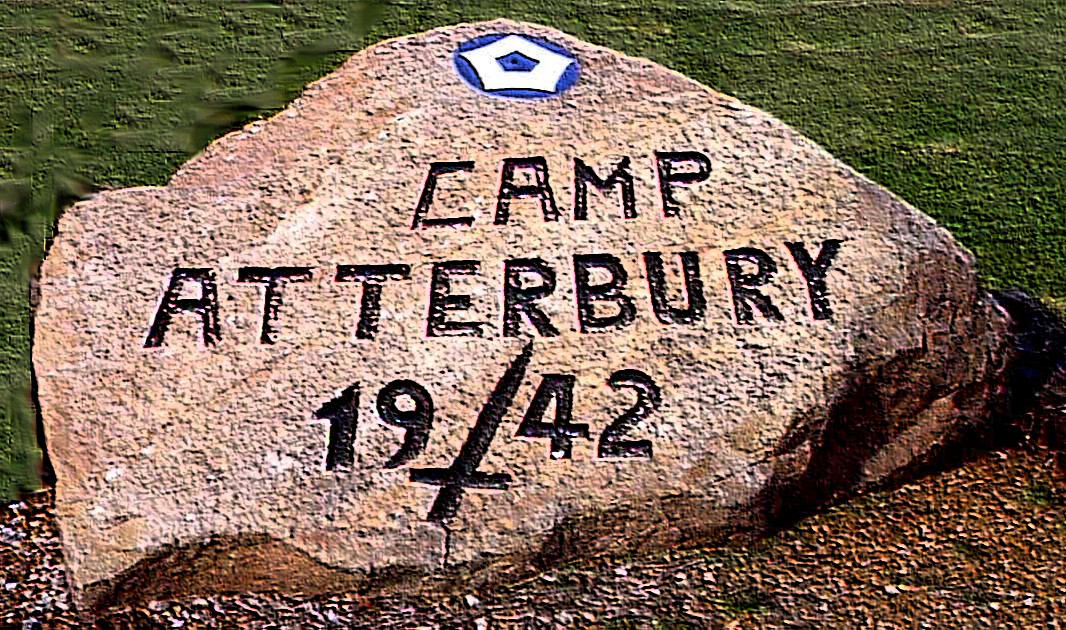Cultural Resources at Atterbury-Muscatatuck
The Indiana National Guard (INNG) are stewards of publically owned land and is responsible for resources in the public trust and need to ensure compliance with federal law.
Currently there are 500+ Archaeological Sites and historic structures, and 2 historic districts located at Camp Atterbury, Muscatatuck, and across INNG managed lands.
Cultural resources under the stewardship of the INNG consist of prehistoric and historic archaeological sites, buildings, structures, and objects; and previously collected prehistoric and historic artifacts. American Indian sacred sites and properties of traditional, religious, and cultural significance may also be present on INNG installations. An inventory of cultural resources at INNG installations has been compiled based on the results of previous archaeological surveys, historic architectural evaluations, and archival and site record searches.
A brief history of Camp Atterbury can be found HERE
Cemetery Visitation
Previous to the acquisition of the land which would become Camp Atterbury, small farms, homesteads, and towns dotted the landscape. When individuals from these communities passed, they were laid to rest in small family plots on their own farms or in cemeteries associated with a local church. When the U.S. Army acquired the land in 1942, preservation and care for the cemeteries passed into their hands. As the current tenants of the facility, the Indiana Army National Guard now manages these burial grounds.
Members of the general public are allowed to visit these publicly available cemeteries, but we ask that you do keep a few things in mind. Please, keep in mind that cemeteries are subject to both national and state protections. Do not dig or otherwise disturb the ground in cemeteries. Do not alter the headstones in anyway. Do not remove any material from the cemetery; anything you find on the ground, leave it in place. Any trash you make or bring in, please remember to take it back out with you. Most of all, please remember to be respectful. For questions contact the INARNG Cultural Resources Manager, at 812-526-1499 extension 64416.
Those wishing to visit the public cemeteries will need to create an iSportsman account, complete his/her ID validation, watch the cemetery safety brief, and acquire a Cemetery Visitation Permit each season. The day of your visit, you'll need to check-in to the cemetery before going down range and checkout once you return to the cantonment area. Maps for cemeteries available for visitation can be found at the following link:
| Anderson Cemetery | Bocock Cemetery | Kansas Cemetery |
| Mt. Moriah Cemetery | Stone Arch Cemetery |
The Atterbury Rock
 The history of Camp Atterbury’s famous rock, which sits at the east entrance to the post, goes back to World War II, when the site was used as one of the nation’s prisoner-of-war camps. In 1943, around 3,000 Italian prisoners of war were held at the post. As reported by The Indianapolis Star on March 1, 2017, a reporter who visited Camp Atterbury during that time described the prisoners as “well-fed, clean, content and probably wouldn't try to escape if they got the chance.” These prisoners, of Roman Catholic faith, constructed their own chapel, and one of them, Libero Puccini, carved the famous rock. During the rock’s unveiling ceremony, it is reported that many of the American officials in attendance were surprised to see the Italian dagger—known since the 15th century as a stiletto, a secondary weapon of knights—had been carved into the stone. After the war, Puccini returned to the United States and became a citizen. He began attending reunions at the post after he was contacted for a 1992 rededication of the Chapel in the Meadow. Puccini died in 2008. He said in an interview:
The history of Camp Atterbury’s famous rock, which sits at the east entrance to the post, goes back to World War II, when the site was used as one of the nation’s prisoner-of-war camps. In 1943, around 3,000 Italian prisoners of war were held at the post. As reported by The Indianapolis Star on March 1, 2017, a reporter who visited Camp Atterbury during that time described the prisoners as “well-fed, clean, content and probably wouldn't try to escape if they got the chance.” These prisoners, of Roman Catholic faith, constructed their own chapel, and one of them, Libero Puccini, carved the famous rock. During the rock’s unveiling ceremony, it is reported that many of the American officials in attendance were surprised to see the Italian dagger—known since the 15th century as a stiletto, a secondary weapon of knights—had been carved into the stone. After the war, Puccini returned to the United States and became a citizen. He began attending reunions at the post after he was contacted for a 1992 rededication of the Chapel in the Meadow. Puccini died in 2008. He said in an interview:
"Everything now is a memory of a momentous past, and I have been quoted as saying that former enemies can become friends. My reality of that concept is my proud citizenship and marriage to a lovely American lady whom I met as a POW. Having resided in the United States for nearly fifty years; I am the proud father of three grown children and six wonderful grandchildren. Coincidentally, one of my sons now serves as a career officer in the United States Armed Services.”